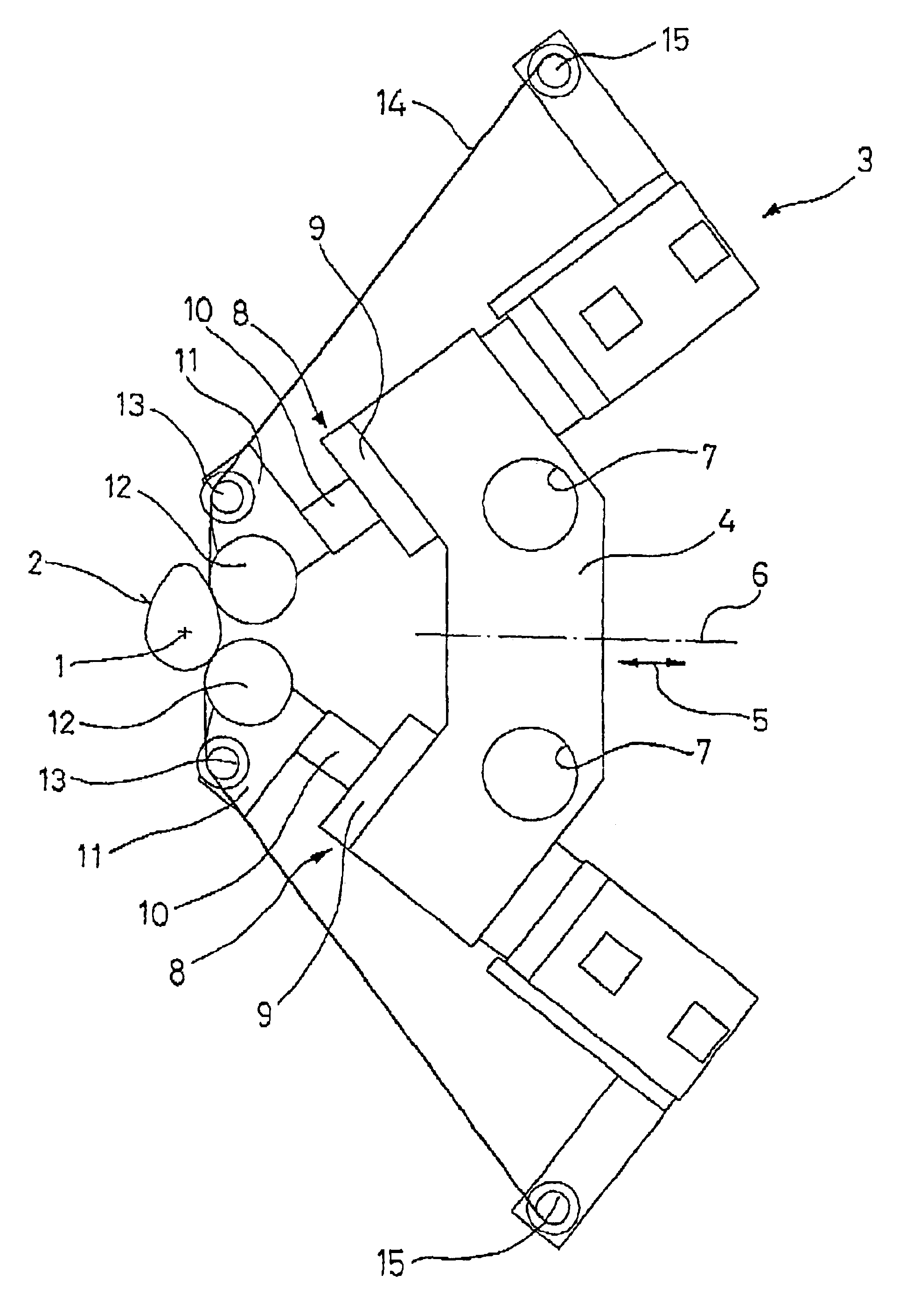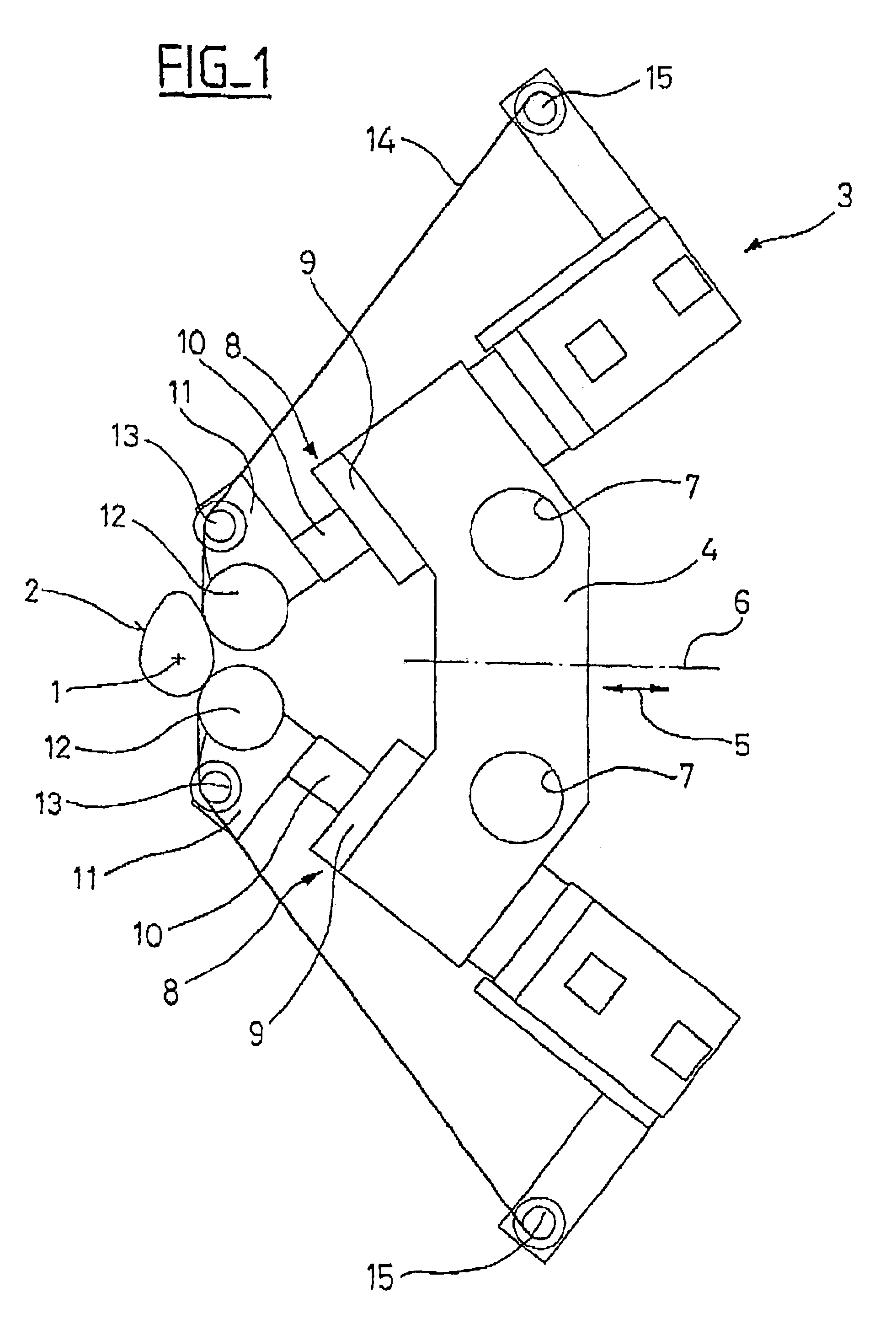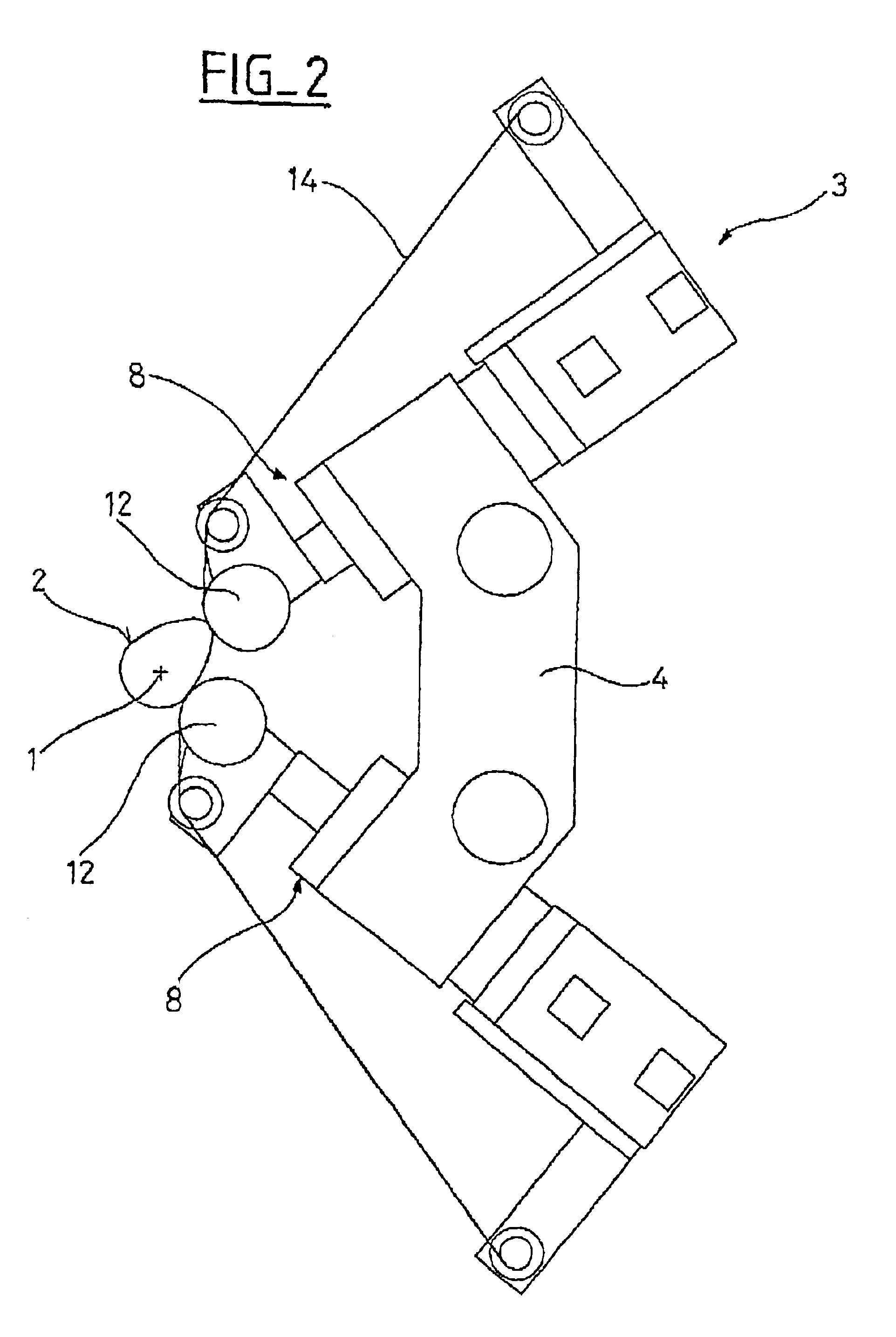Abrasive belt and machining process associated therewith
a technology of abrasive belts and machining processes, which is applied in the direction of grinding machine components, grinding/polishing apparatuses, grinding machines, etc., can solve the problems of not being able to give the cam surface a very precise machining quality (surface condition) at all, machining a cam surface, and entail a relatively long machining tim
- Summary
- Abstract
- Description
- Claims
- Application Information
AI Technical Summary
Benefits of technology
Problems solved by technology
Method used
Image
Examples
Embodiment Construction
[0020]According to FIG. 1, a camshaft 1 symbolised by its axis of rotation is mounted between centres and driven in rotation around its axis which is here horizontal for the purpose of machining (superfinishing) a cam surface 2 using a device 3 placed on one side of the camshaft 1, approximately in the plane of the cam (surface) 2 to be machined.
[0021]The device 3 includes a carrier 4 mounted, by means not shown, in a position adjustable way (arrow 5) relative to the camshaft 1, along a direction perpendicular to the axis of the latter. For the particular purpose of adapting to different camshafts, the carrier 4 which is symmetrical relative to a plane 6 passing through the axis of the camshaft 1 may furthermore be position adjustable parallel to the axis of the camshaft 1 by guide means which can for example be sockets 7 mobile on sliders.
[0022]The carrier 4 carries, in the same plane perpendicular to its plane of symmetry 6, in symmetrical positions relative to this plane 6, two f...
PUM
| Property | Measurement | Unit |
|---|---|---|
| angle | aaaaa | aaaaa |
| angle | aaaaa | aaaaa |
| angle | aaaaa | aaaaa |
Abstract
Description
Claims
Application Information
 Login to View More
Login to View More - R&D
- Intellectual Property
- Life Sciences
- Materials
- Tech Scout
- Unparalleled Data Quality
- Higher Quality Content
- 60% Fewer Hallucinations
Browse by: Latest US Patents, China's latest patents, Technical Efficacy Thesaurus, Application Domain, Technology Topic, Popular Technical Reports.
© 2025 PatSnap. All rights reserved.Legal|Privacy policy|Modern Slavery Act Transparency Statement|Sitemap|About US| Contact US: help@patsnap.com



